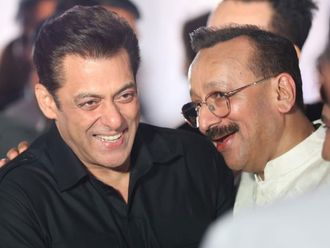The erudite Robert Fisk, who writes enlightened commentaries on the Middle East in the Independent, highlighted the rebirth of the Syrian Arab Army (SAA) a few days ago, calling his readers to look for a steady recovery. In the weeks and months to come, Fisk concluded: “The most important institution to watch in Syria is not the regime.” It was not even Bashar Al Assad or his secret police nor, for that matter, opposition groups ranging from the Free Syrian Army (FSA) to the Jabhat Al Nusra. The establishment to watch, he posited, was the SAA.
This assessment came a few days after Daniel Pipes, the well-known historian and political commentator with little sympathy for Arabs in general, recommended “Western governments [to now] support the malign dictatorship of Bashar Al Assad,” rather than stay neutral. In a widely disseminated opinion essay published in the Washington Times, Pipes justified his call on the following premise: “Evil forces pose less danger to [Westerners] when they make war on each other. This (1) keeps them focused locally and it (2) prevents either one from emerging victorious (and thereby posing a yet-greater danger). Western powers should guide enemies to stalemate by helping whichever side is losing, so as to prolong their conflict.”
Although Fisk and Pipes offered intriguing evaluations that could, presumably, save the Baath regime, how realistic were their complementary assessments?
During his recent tour of Damascus, Fisk noticed that the army was apparently in command of all security matters on various battlefields, not taking orders from military intelligence. He reported that the Syrian army was “now in charge,” as “field commanders — not cops — [made] decisions”, which were distinguished by an unprecedented level of professionalism. He emphasised that most cases of brutality were the work of plain-clothes security agents, not the military, whose disciplined personnel “arrested and — incredibly — put before military courts ... the regime’s thugs”.
Lest anyone accuse Fisk of defending the Syrian Government, he warned his readers to be wary, ostensibly because the army was “a ruthless machine” with too many war crimes committed by regular soldiers. Nevertheless, he anticipated an eventual correction, because the “mukhabarat may come and go, but the army remains”.
This appraisal contradicted a February 2013 report on the Syrian army issued by the Washington Institute for the Study of War, which identified the military’s structure and orientation as fundamental shortcomings. Rather than show adaptability, all of the SAA’s doctrinal emphasis centred around three specific goals, it purported: Defend Syria against an Israeli invasion; project force into Lebanon and, most importantly, prevent a successful coup attempt. It was for these reasons, the report concluded, that Damascus invested heavily in the regime’s praetorian formations. It also acknowledged that while the SAA experienced internal unrest during the Muslim Brotherhood uprising in the early 1980s, little or no changes were introduced to deviate from training for a conventional conflict, which meant that it remained ill-suited to wage urban warfare.
Given this professional assessment, and for Fisk’s observations to be correct, one must quickly conclude that the Al Assad regime learned its lessons and reorganised its security forces for internal conflict.
Naturally, and assuming that the SAA did in fact make the leap, it was likewise important to take note of similar changes within the opposition. In fact, if the FSA was hampered by poor coordination in 2011 and most of 2012, it finally settled on a new 30-member unified command structure called the Supreme Joint Military Command Council (known as the Supreme Military Command [SMC]) on December 7, 2012. While opposition forces wasted a lot of time and energy, the SMC demonstrated that it could become an effective mechanism for greater coordination to unite the efforts of revolutionary commanders across Syria’s battlefronts. More important, it managed to incorporate commanders from all provinces and secured legitimacy on the ground to now begin the process of creating a capable structure that provided a national-level chain of command.
Under the circumstances, few ought to be surprised when Syria’s state security apparatus collapses, as the Al Assad regime transforms itself into a militia-like entity. Whether the SMC will then be able to fill the power vacuum during a transitional government is what remains to be determined. Of course, this is easier said than done, but chances for success were far greater than many assumed.
Such a judgement was also less cynical, especially in the light of the massive casualties caused by the SAA, whose air force continues to bombard Syrians indiscriminately. Indeed, mocking evaluations reflected disregard to the many dead and injured, the millions of refugees, an unlimited destruction and the unique polarisation that divided Syria’s hapless population whose quest for liberty was still unshaken.
Beyond avowed cynicisms, foreign observers may actually believe that there were “worse prospects than Sunni and Shiites mixing it up,” hoping that “neither side wins,” though few ought to doubt that the revolutionaries could also triumph.
Dr Joseph A. Kechichian is the author of Legal and Political Reforms in Saudi Arabia (Routledge, 2012).









